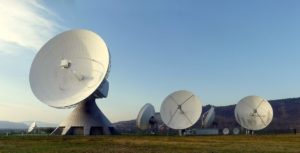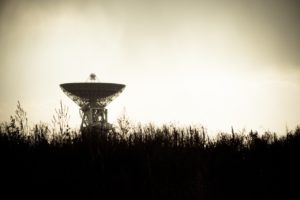111. NDB
a. NDB (non-directional radio beacon /無指向性無線標識 施設 ) は長/中波帯 ( 通常 190 ~ 415KHz) の電波で運用 され、 連続的な搬送波とともに一定間隔で識別符号が発信 される。 識別符号はアルファベット2文字で構成され、 通 常は 30 秒毎に2回の割合で連続したモールス符号により 送信される。 注 ) 米国では NDB は 190 ~ 535KHz で運用されている。
また識別符号は3文字 ( コンパスロケーターの場合は
2 文字 ) で構成されており、 NDB で音声放送が行われ
ることもある。 音声放送が行われている間は識別符号
は発信されない。
は、NDB の電波を受信することによって計器盤上にその NDB への機軸からの方位が示される。 これによって航空 機は NDB 局へホーミングを行うことができるところから、 NDB はホーマー (homer) とも呼ばれている。
また、航空路, 経路, 進入方式など計器飛行方式による 経路が NDB によって設定されているところがある。 b . NDBは信号電波の減衰、 あるいは夜間の誤差,地形による
誤差,海岸誤差等の誤差があるほか、 ADF には静電気による 攪乱や類似周波数との混乱による誤指示等種々の誤差を生 じやすい。 特に雷による影響は甚だしく、 静電気を帯びた積 乱雲の近くでは正しい方位を示さないことがある。
また、 ADF にはパイロットに誤指示を警報する機能がな いこと、 および誤選局あるいは混信による致命的な方位誤 差を避けるために、 NDB を利用する場合はその識別符号を 確実に聞き取ることが必要である。
ADF (automatic direction finder) を 装 備 し て い る 航 空 機は、NDB に使用される長中波帯の電波は、 その周波数が低い ほど静電気の妨害を受けやすい。 したがって NDB より一 段高い周波数を使用しかつ出力も大きいラジオ放送の電波 を ADF で利用することは、 前記の NDB 攪乱時の代替方法 として、 また利用すべき NDB が得られない場合の航法手段として有効と考えられる。 ただしいかなる航空路,各種 経路等もラジオ放送の電波を使用しては設定されていない こと、 さらにラジオ放送では常時識別符号が確認できない という欠陥があることから、 ラジオ放送電波の利用は、 あ くまでも補助手段として用いるにとどめるべきである。
111. N D B
a . NDB (Non Directional radio Beacon) transmits identification signals non-directionally along with continuous carrier wave on a LF/MF band frequency
(190 415 KHz). The two letter alphabet identification codes are transmitted twice in every 30 seconds in a continuous Morse code form.
Note: The NDBs are operated in the 190~535 KHz band in the U. S.. Also, the code is generally composed of three alphabets (two letters for a compass locator), and the NDB may occasionally be applied for voice broadcasts. Identification signals are not transmitted during voice broadcasts.
A relative bearing to the station is indicated on an ADF (Automatic Direction Finder) instrument by receiving NDB signals. Because the pilot can home on the station, the navaid is called a “homer”.
Also, quite a few airways, route segments, instrument approach procedures are still constructed by the NDBs today. b . NDB is subject to disturbances that may cause an erroneous bearing indication such as attenuation, errors caused at night or by the terrain or coastline as well as static electricity, similar frequencies etc.
Especially, the influence by a thunderbolt is significant, so that ADF equipment may indicate erroneous directions in the vicinity of an electrically charged cumulonimbus. Additionally, since ADF equipment does not incorporate a “flag” which warns a pilot of any wrong indication, the pilot should monitor identification signals accurately in order to avoid a fatal navigational mistake caused by a missed selection or confusion of the frequency.
Influences by the static electricity are increased as the frequency goes lower; therefore, it may be quite effective to utilize the frequency band assigned for the radio broadcasting which usually operated with higher frequencies and a greater power, as an alternative means when NDB signals are unreliable, as well as when any NDB is not available.
However, all airways are not predicated on the radio broadcast frequency band and identification codes cannot be obtained on the radio broadcast. Therefore, radio broadcast frequencies should be applied only as an auxiliary measure.












